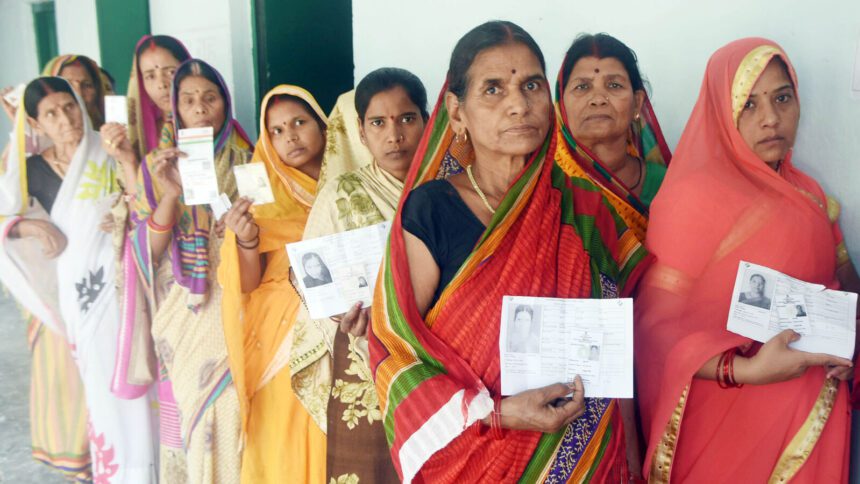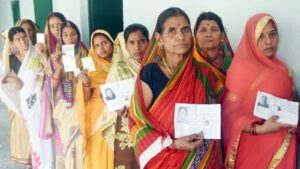To begin, the political leaders involved in Bihar’s elections might want to avoid overly simplistic calculations regarding poll outcomes, as current dynamics are a complex amalgamation of significant changes and persistent challenges.
Reflecting on the late 1990s, I recall a journey from Patna to Dhanbad alongside two colleagues. During a particularly cold winter day, we came across a striking scene: a woman dressed only in a sari, hesitating at a slush-filled pond, weighed down by the embarrassment of bathing in public. Lacking another sari to wear afterward, she faced the jeers of passing vehicles. In an attempt to maintain her dignity, she ultimately sat down and rinsed her mouth with the same water. Since then, substantial changes have unfolded in Bihar, including the creation of Jharkhand, separating from the larger state. The conditions for women in Bihar have notably improved.
Government statistics indicate that initiatives by both the state and society have significantly benefitted women. In 2000, the female literacy rate stood at 33%, which has now risen to 73.91%. The state’s 35% reservation for women has positively influenced the male-female ratio in the workplace. The police force in Bihar currently comprises 37% women, while the number of women teachers has increased to 261,000, showcasing women’s growing empowerment both in education and in law enforcement.
Bihar is also home to about 106,000 self-help groups that empower 14.5 million women, enabling them to achieve financial independence. These women have accessed ₹15,000 crore in bank loans, boasting a repayment rate exceeding 99%, which far surpasses that of men. Such advancements have greatly reduced past incidents reminiscent of the hardships of the 1980s and 1990s.
Despite these achievements, the reality is more nuanced. Even with their empowerment, women’s families—sons, husbands, or other relatives—often find themselves compelled to migrate, either internally or internationally. This ongoing struggle casts doubt on the significance of progress reflected in development data.
Bihar lacks substantial manufacturing infrastructure, and diminishing farm sizes combined with environmental challenges such as drought and floods drive many farmers away from agriculture. Nearly 29 million, or a quarter of the state’s population, is forced to leave in search of work. Employment remains a contentious issue, with political parties offering various perspectives but failing to provide effective solutions to this enduring crisis.
Insights gathered from local youths returning home for Chhath puja highlight the pervasive job-related distress. For instance, Gangaram from Madhepura, who works in a chocolate factory in Bengaluru, expressed the need for employment opportunities in Bihar. “There’s nothing in Bihar in terms of employment; not a single factory,” he lamented. His words reflect a broader sentiment: “Our connection with family and society weakens with every departure. We only return every couple of years and miss our loved ones.”
Sanjay Chandravanshi, employed in Mumbai, reiterated a common demand among the youth: “Whoever comes to power should focus on creating job opportunities. If Bihar had factories, we wouldn’t need to leave. Even if work cannot be found at home, at least we would be in the state.”
The question remains: Will the political leaders who emphasize “Roti Aur Rojgaar” (bread and employment) adopt a constructive approach once elected? Or will the youth of Bihar face another round of disillusionment? Bihar awaits pragmatic solutions rather than mere rhetoric. Long ago, a young woman posed a poignant question in Patna: “Kya ab Bihar ki bari hai?” (Is it Bihar’s time to shine now?); her question still requires a clear answer.
Shashi Shekhar serves as the editor-in-chief of Hindustan. Views expressed are personal.










